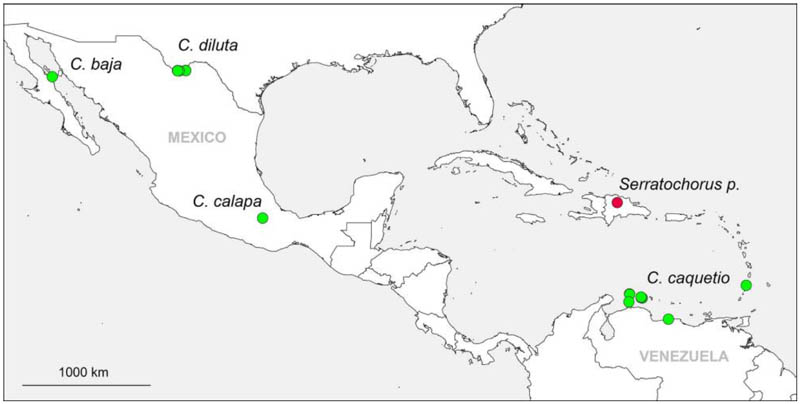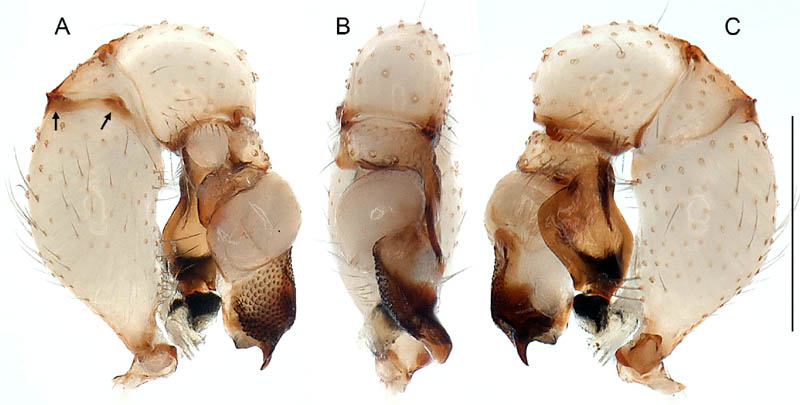Here we describe a new species we recently colected in Mexico, Chisosa calapa, and restudy in detail the morphology (incl. ultrastructure) of the type species, C. diluta, and of C. caquetio, based on material newly collected in the USA and Curaçao. We document further similarities with Physocyclus but find only weak morphological support for the monophyly of Chisosa (body size reduction and short legs).
In addition, we document surprisingly large genetic distances among C. caquetio specimens from Curaçao (>14% CO1 K2P distances), possibly indicating species limits. Finally, we propose that the Dominican amber genus Serratochorus, based on a single specimen, is also phylogenetically close to Chisosa and should be included in future studies on these enigmatic spiders.

Known geographic distribution of Chisosa, and geographic origin of the possibly closely related Dominican Amber species Serratochorus pygmaeus.

Left male palp of the newly described Mexican species Chisosa calapa.